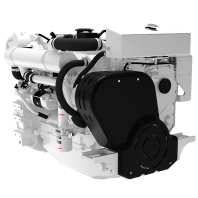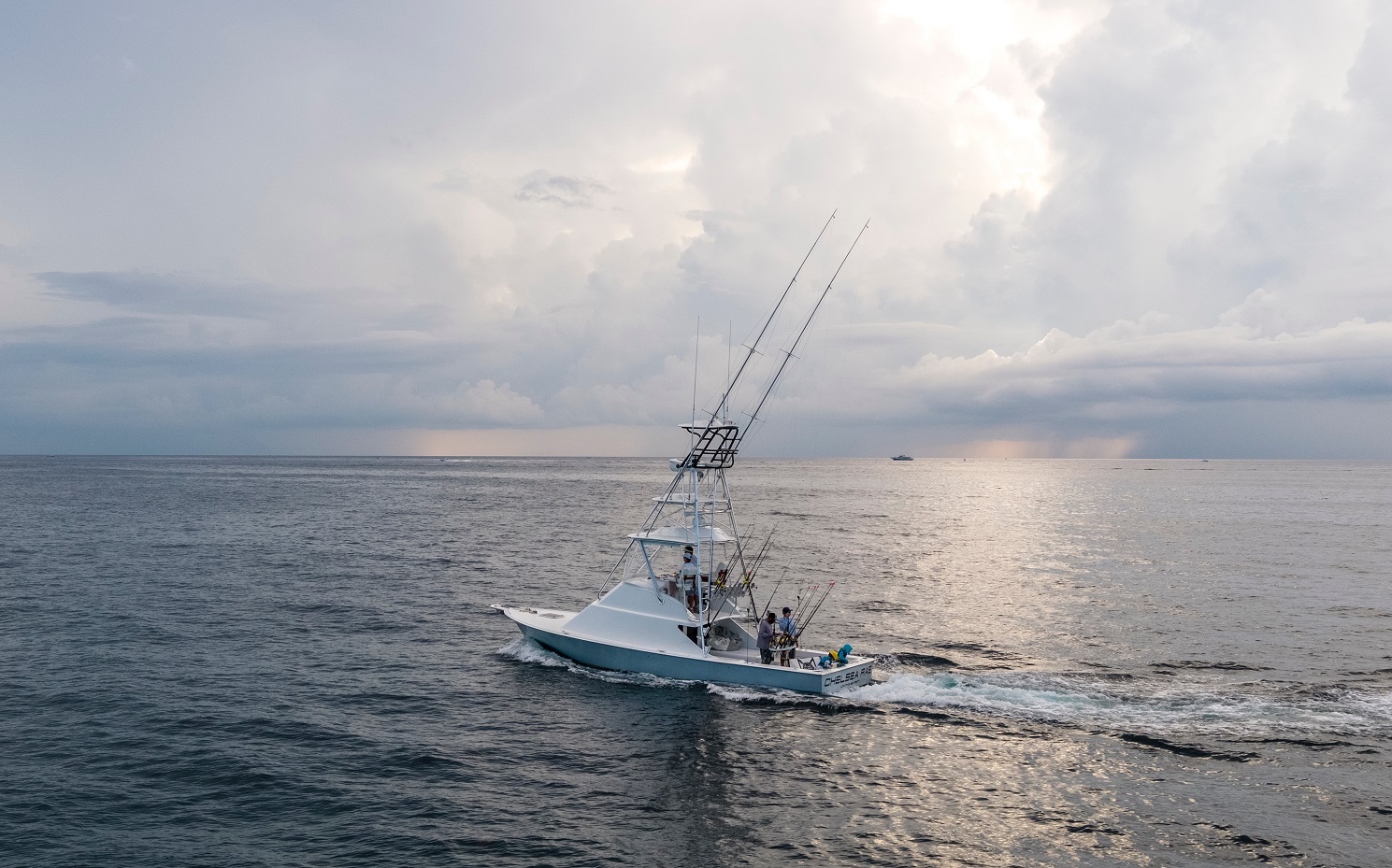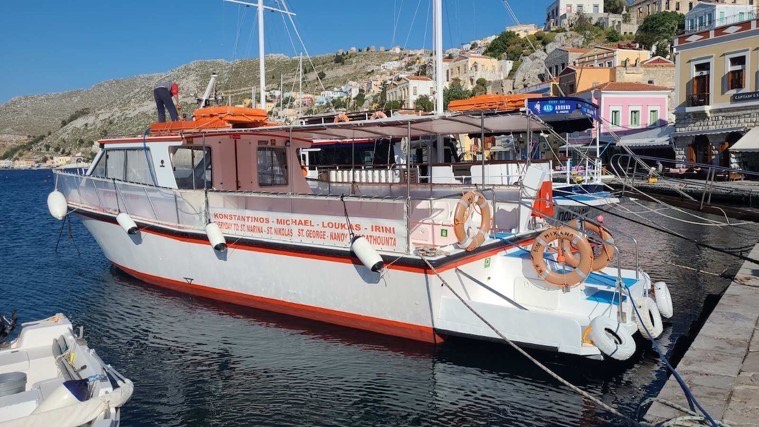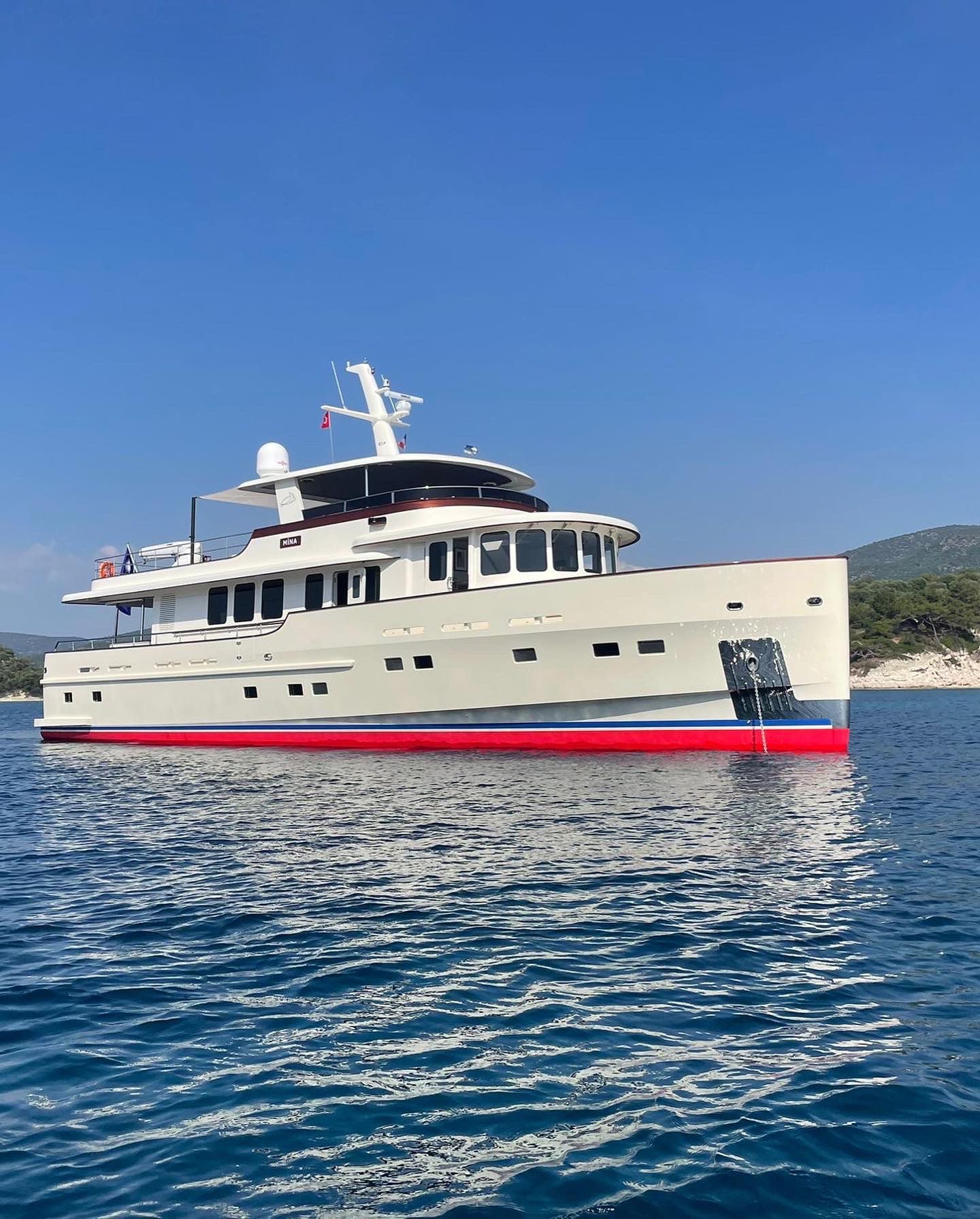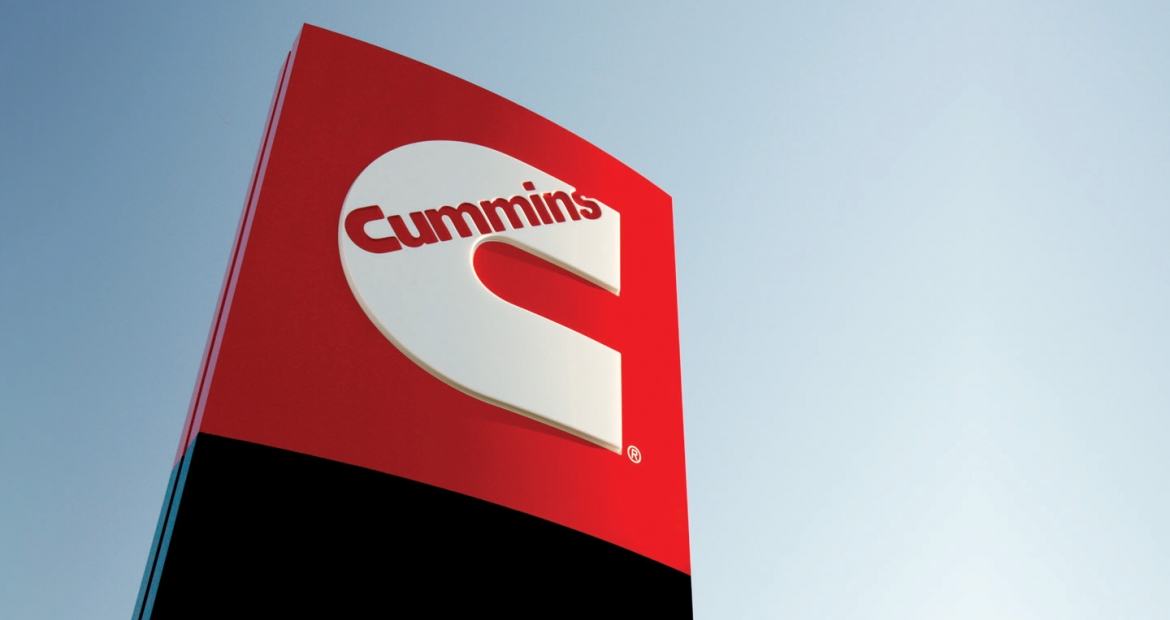
Cummins Vessel Reference #799
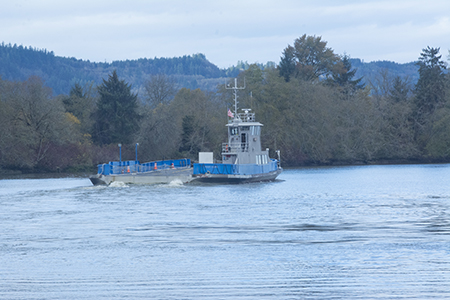
Since 1925 there has been some form of car ferry crossing of the lower Columbia River from Puget Island on the Washington side to Westport Slough on the Oregon side. In 1959 Wahkiakum County took over operation of the ferry and in 1962 had a steel-hulled ferry, named for the county, built by Nichols Boat Works at Hood River Oregon. This 12-car ferry served until 2015 when the county took delivery of a larger 23-car ferry.

This ferry, named Oscar B, after Oscar Bergseng who served as ferry captain for 17 years. He died in 1985 after serving further years as ferry commissioner. Nichols Brothers Boat builders at Freeland, Washington built the new ferry. As it entered its second winter of river crossings, the ferry had proven itself in the currents that can reach three knots and in providing safe passage in all conditions from wind to fog and in crossing the path of deep sea ships bound up from the Pacific to the several ports along the river.

Although the run is only about 1.5 miles, half is crossing the river currents and half is in a shallow slough on the Oregon shore. With a two story house set, aircraft-carrier style, off to one side, the skipper’s visibility of both his the cars and passengers and the river route is excellent. An comprehensive suite of electronics provides integrated chart and GPS, radar for the fog or winter dark, and a sounder for the river shallows.

The ferry is remarkably maneuverable. On the Puget Island side, the skipper sets the forward port bow up against one of a set of steel pilings and uses the rudders to swing the stern into place before backing down to lock the stern in place for off loading. On the Oregon side, the approach is straight into the slip. Vehicles exit quickly and the return trip is loaded. After backing out from the ramp, the boat’s two Cummins QSL9 diesels, rated at 290 HP, turn the boat quickly in its own length. The turning and maneuverability is further enhanced by Northway shaft brakes on the drives behind ZF311 gears with 2.548:1 ratios and turning 31 by 29.45-inch props. The vessel design takes advantage of the boat’s beam to set the engines and drives well apart which further enhances maneuverability.
The QSL9 engines meet U.S. EPA tier 3 emission regulations without use of after treatment. The high-pressure common rail electronically controlled fuel system provides constant high injection pressure regardless of engine speed or load condition. Benefits include low noise and vibration for quiet operation and faster load acceptance, which is appreciated on a ferry with a short run and maneuvering at either end. One of the operators reports that the ferry burns about 1500 gallons of fuel every two weeks.
The combination of power and design take full advantage of the shallow beamy hull. In addition to the two Cummins main engines, the boat is fitted with a pair of Cummins 23.0kW MDKBV Onan generators.
Haig-Brown photos courtesy of Cummins Marine
For further information:
Joe Tobin
Marine Regional Sales Manager,
Cummins Sales and Service
1030 SW 34th St. Suite A Renton, WA 98057
Mobile: 425 757 4220
Office: 425 235 3400 | Extension: 3414
Trophy fish are measured by weight and length at the dock. They almost always exceed the size of the angler reeling them in. The exception would be M/V Chelsea ...
Greek passenger vessel repowers with Cummins. Cruising to Symi on a water taxi is more than a boat ride across the Aegean Sea. Departing the eastern sh...
Crews with no choice but to head out to sea in rough weather conditions rely on trawlers' inherently robust, stout design based on the DNA of highly capable fis...
